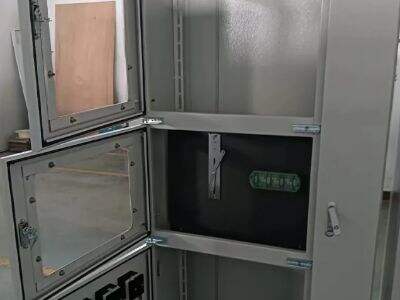You have ever given thought about that big of panels which helps to send the high voltage electricity? These panels are extremely critical as they help in powering our residences and industries. Without them, there would be no electricity for us to flip lights on and off, for us to use our computers, or for us to keep our food cold in the refrigerator. One is called Shangdian which creates durable and effective panels. They make good quality panels and we want to make sure that you know everything about how these panels operate and which unique components are built inside.
What Are The Components of High Voltage Panels?
1. Knowledge about Materials Used in high voltage panels There arefew important components that work to ensure electricity is safely and effectively distributed. Here are the key details you need to know:
Incoming feeder: This is the most vital part that gets its input from the utility company, the one that provides our homes with electricity. That power is routed to the high voltage panels by the incoming feeder.
Circuit breaker: The circuit breaker works as a safety guard for the panel. It shields the panel and prevents it from being damaged by too much electricity flowing through it. That's why if there is a problem, the circuit breaker will just switch off the power to make sure everything is safe.
Busbar: This is an electrical conductor which acts as a bus for passing current. It assists in moving power from the incoming feeder to different areas of the building. Busbars ensure that there are no hot spots in electricity and that each area receives power as required.
Outgoing feeder: This is a very important part because it distributes power to various sections or rooms in the building. Each outgoing feeder can serve a particular portion of the building, such as the lights in the hallway or the outlets in the classrooms.
Control and monitoring devices: These components assist engineers in monitoring how the panel is functioning. They can monitor if everything is in order and can control the operation of the panel, ensuring that it functions correctly.
What Is The Mechanism Of High Voltage Panels?
So now that we understand what are the parts of high voltage panels, let talk about how they work. Here’s a basic description of the process:
Its Power: Incoming feeder provides power to the High Voltage panels. This is where the electricity that will power the building begins.
Protection: The circuit breaker helps to protect the panel. It ensures the panel doesn’t get overloaded — so don’t receive an overload of power all at once. In the event of a short circuit or other problem, the circuit breaker will quickly disconnect the power in order to protect against damage.
Distribution: It distributes the electricity. It distributes electrical power from the incoming feeder to the outgoing feeder ensuring that the various building components receive the appropriate electricity.
Control and monitoring: The control and monitoring devices are very important for engineers. They assist at evaluating the functioning of the panel and enable the engineers to make corrections when required. Then they can make sure everything is running correctly.
High Voltage Panel Technology Overview
So now let's dig into the tech behind high voltage panels. Using the technology available today, Shangdian's panels are designed to handle a lot of power safely. These panels are made with firm and rugged materials that can withstand the test of time and not get broken or worn easily.
Our control devices in high voltage panels allows engineers to monitor and control the functioning of the panel remotely. This is important because if something goes wrong the engineers are able to easily track the problem down and resolve it. It helps reduce an amount of downtime, which translates into providing power to our customers without extended outages.”

 EN
EN
 AR
AR
 BG
BG
 HR
HR
 CS
CS
 DA
DA
 NL
NL
 FI
FI
 FR
FR
 DE
DE
 EL
EL
 HI
HI
 IT
IT
 JA
JA
 KO
KO
 NO
NO
 PL
PL
 PT
PT
 RU
RU
 ES
ES
 TL
TL
 IW
IW
 ID
ID
 SR
SR
 UK
UK
 VI
VI
 HU
HU
 TH
TH
 TR
TR
 AF
AF
 MS
MS
 IS
IS
 AZ
AZ
 BN
BN
 LA
LA
 MI
MI
 MN
MN
 KK
KK
 UZ
UZ








